One thing that I have wanted to do for awhile, is consistently update the buyer’s guides. Although technology changes in the home server space, there tends to be one or two big product launches each year that make it very worthwhile. The last Entry DIY Storage Server guide was done in December 2010, and it has been far too long since I did an update. Expect the mid-range and high-end guides to follow. As is customary with these, I am not going to focus on drives as the choice will vary based on the exact storage needs people have.
Solution 1: Going Low-Power mITX
I should forewarn folks that I really like the low-power mITX setups. They are certainly not fancy, but after one is done using them, they tend to make great pfsense appliances or network clients.
Intel has just announced the new 32nm Atom range. It is likely that we will see new storage server Atom solutions in the near future. Until those announcements, the Supermciro X7SPA-HF-D525 is still the recommended platform as it was in December 2010, except for the fact that the D525 versions are now readily available.
What has changed this go-round is that AMD has an interesting competitor in this space. I think something like an ASUS E35M1-I DELUXE would make an excellent storage platform since it also has built-in 802.11n giving the board a second network connection which is not common on the E-350 platforms. Gaining WiFi comes at the expense of losing an internal SATA port. If one does not require WiFi, the ASUS E35M1-I is about $50 less and comes with six internal ports. With a PCIe 2.0 x16 slot (x4 electrical) one has the option to later add either another storage controller or a LAN card. One of the key benefits of the AMD platform is the fact that it can support 8GB of RAM. Oftentimes one will use RAM to cache frequently read data so having more than 4GB is a significant benefit. I was a big fan of the ASROCK 350M1 E-350 platform and still use it daily, however for this build having two extra internal SATA ports is worth the price premium.

Bottom line: if you are using something less picky such as Linux or Windows, I would chose AMD this time around. If you need something with Intel 82574L controllers (for example), IPMI 2.0 and/ or an Intel ICH, the D525 based Supermicro boards make a lot of sense. I would caution folks that with 32nm Atoms arriving shortly, it may pay to wait a bit on an Atom based motherboard.
For chassis I think there are two great options:
The first option, is the same Chenbro ES34069 chassis with four hot swap bays in last year’s guide. I would recommend getting the 180w version just because four drives at startup plus a future PSU and fans may be taxing on a 120w system. If one was doing a FreeBSD based build with the OS on a USB drive, four storage drives in RAID-Z, RAID-Z2, or RAID 10, and two low-cost SSDs for L2ARC, then this would be a great six drive enclosure. If looking at a 2-4 drive system, this is an ideal case.
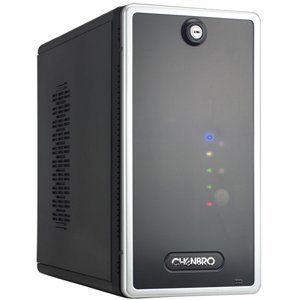
Another interesting option is the Fractal Design Array R2. This chassis has room for six internal 3.5″ drives which matches the number of ports the motherboard has.
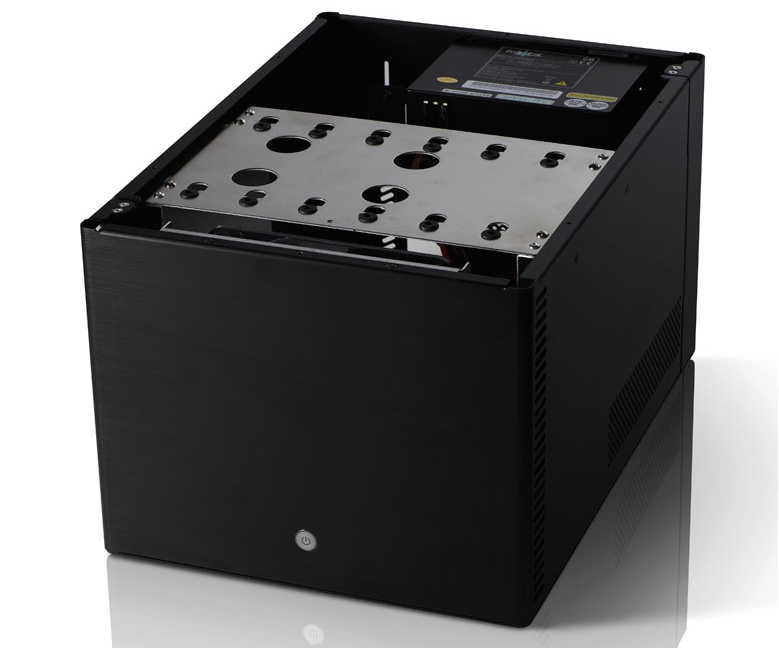
I really like the Fractal Design chassis at this point so I think they are strong options.
Solution 2: Low-cost mATX
In the previous guide I recommended an AMD Athlon II based solution. I am no longer recommending the Athlon II platform. AMD’s new Fusion CPUs tend to offer a better value, and the lower end and Bulldozer chips may offer a compelling alternative in the coming months. Right now, I am going to recommend an Intel based solution based on a Pentium CPU the Intel Pentium G620. Note, this is done purely for cost purposes, and I can see a lot of good reasons to move up into the Core i3 or Xeon E3 range, as will be seen in subsequent buyer’s guides. There is also the G620T which trades a lower clock speed (and additional cost) for a 35w TDP. It is an interesting proposition for those that have very high power costs.
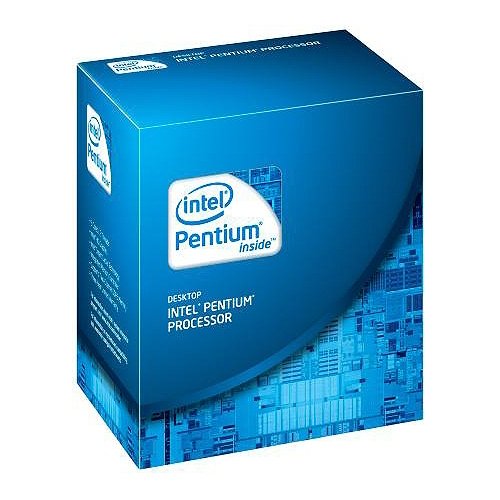
For the motherboard selection I am going to make the same assumptions I made with the mITX builds. No IPMI 2.0 is required and no Intel 82574L gigabit NIC is required. This basically opens up consumer boards to the builds and effectively lowers prices by $100. I do feel these features are borderline essential for servers, but optimizing on price, one has to pass. Here I am going to recommend the ASUS P8H67-M because it is sub-$100 and has six SATA ports and mine has been rock solid since before posting the P8H67-M review. If one only needs four ports, or is already looking to add a SAS controller, the H61 boards will save a good $25 on the build price. On most four drive systems running one OS, I would think the Atom or E-350 would be sufficient though. As one can see from the below picture, one can easily expand the board to house four DDR3 DIMMs and 16GB of RAM.
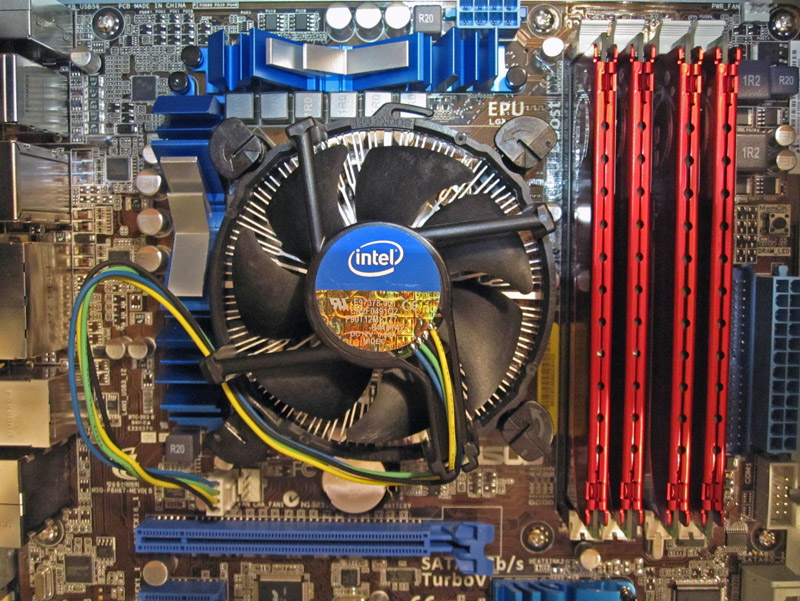
As for chassis, I have gone with the Fractal Design Define Mini. I really do not like the idea of using the same manufacturer in both builds, but this is significantly less expensive than the Lian-Li chassis used last year (feedback was to keep build costs down) and has enough space and drive bays for the low-end storage server. One can purchase a larger and less expensive ATX mid-tower, but I wanted to keep space requirements down for this mATX build. If Supermicro managed to put two more drive trays in something similar to the SC731-300 chassis I would certainly look into that. There are many less expensive options, so realistically a $40 chassis would work OK. I do prefer to have easy access to drives in my file servers though as that helps a TON when it comes to replacing drives.
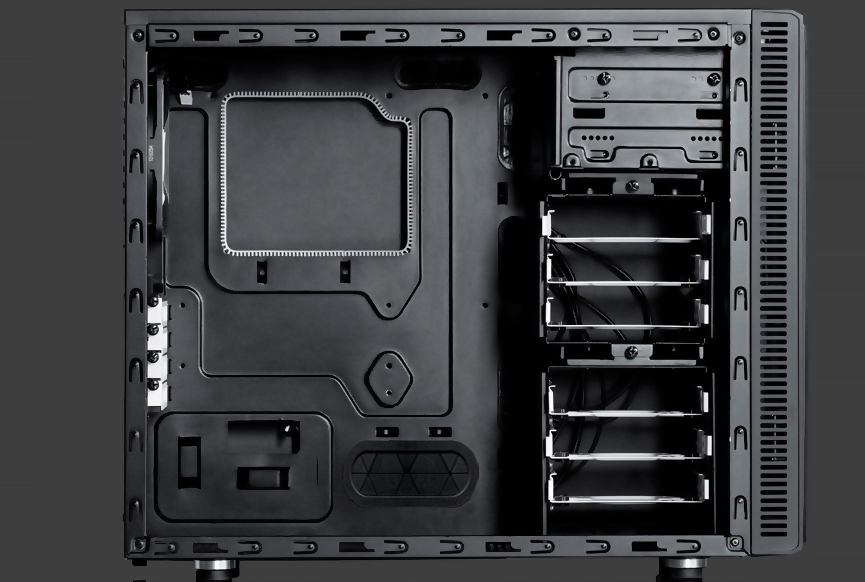
Parts carried over from last year are the Intel Gigabit CT NIC and Seasonic power supply. I have added 8GB to this build, like the E-350 build because more RAM is generally a good thing in 64-bit storage servers.
Price Comparison
Platform 1 (AMD E-350 mITX)
- Motherboard/ CPU: ASUS E35M1-I $130
- Memory: 8GB PC1600MHz DDR3 (one can go less expensive here) $45
- Chassis/ Power Supply: Fractal Design Array R2 or Chenbro ES34069 with Power Supply: $200
Approximate total cost: $375
Platform 2 (Intel mATX)
- CPU: Intel Pentium G620 $73
- Motherboard: ASUS P8H67-M $100
- Memory: 8GB PC1600MHz DDR3 (one can go less expensive here) $45
- Additional NIC: Intel Gigabit CT Desktop Adapter: $35
- Chassis: Fractal Design Define Mini $120
- Power Supply: SeaSonic SS-350ET: $50
Approximate total cost: $423
Conclusion
Generally, I would say spend a bit more on a system, build once, and do not build multiple times. That philosophy often leads me away from the low-cost segment. With that being said, there are a lot of users that are more than satisfied with what low-end Atom/ Pentium and AMD based NAS systems can do. I think the new Cedarview Atom CPUs may provide new life to the Atom line, but looking forward, the lack of upgrade path and low speeds are making them less exciting in the segment. AMD’s slightly faster E-350 CPU does not seem to have many server oriented designs, which does make some sense as the GPU portion of the platform is meant to get a lot of attention. One can obviously customize the above as they wish, but the builds above should provide a good starting point.
Taking user feedback, both configurations are much less expensive than in December 2010 which is good news for those building home servers.




been waiting for you to do one of these. nice job
I am seriously thinking about using the ASUS E35M1-I in my next Home Server build using WHS2011.
My concerns are that after doing some research, this board does not support hardware RAID. This presesnts a problem for me, as Drive Extender has been omitted from WHS2011 and, I am inclined not to go with another software RAID arrangement as this seems like a sluggish approach to using SATA3.
Could you confirm whether (or not) this is true? And what do you recommend as a solution?
** By hardware raid, what I mean is on-board support for RAID as opposed to a separate controller.
Hy
the Chenbro ES34069 has four hot swap bays not six as mentioned in the first sentence =)
Too bad there arent (m)any mini-itx or micro-atx cases with (more than 4) hot swap bays :(
Daniel: I run from onboard raid in general unless you are using RAID 1 or 10. For a low-end WHS like this, I would use a software solution. Moving to 8+ disks I would recommend a real hardware RAID controller. Most of the time RAID 1 is fine to saturate GigE for the majority of the disks.
Alex, thanks for catching the typo!
Thanks for the updated review. I’m waiting for a revamp of the mid and higher priced units. I’ve decided on the Norco 4220 and Areca 1680-IX 24-4G but nothing else. New help on PSW, MB, RAM, SSD OS drive, cooling, Fans. This is my first full build on my own.
Will have that hopefully in the next few days ER_MD. Trying to buy a house during a busy time at work :-)
One thing I was waiting for was the desktop Bulldozer launch.
Have you taken a look at the Lian-Li PC-Q08 series of mITX cases as the Chenbro ES34069 is no longer available. No hot swap, but nice small case with side load (6) hard drive bays and it accepts a standard ATX power supply. http://www.newegg.com/Product/Product.aspx?Item=N82E16811112265
Love the article, right in line with what I was thinking for a Home Server…I had the same concerns as Daniel regarding the on-board RAID controller.
My old MB concked out (I was running Solaris 10 with a RAID Z array) so I bought the ASUS E35M1-I (8 gb ram) and migrated to openindiana (solaris would not install for some reason; couldn’t find disks). Works great so far, low power. Graphics are probably overkill but the rest is wonderful. Just FYI.